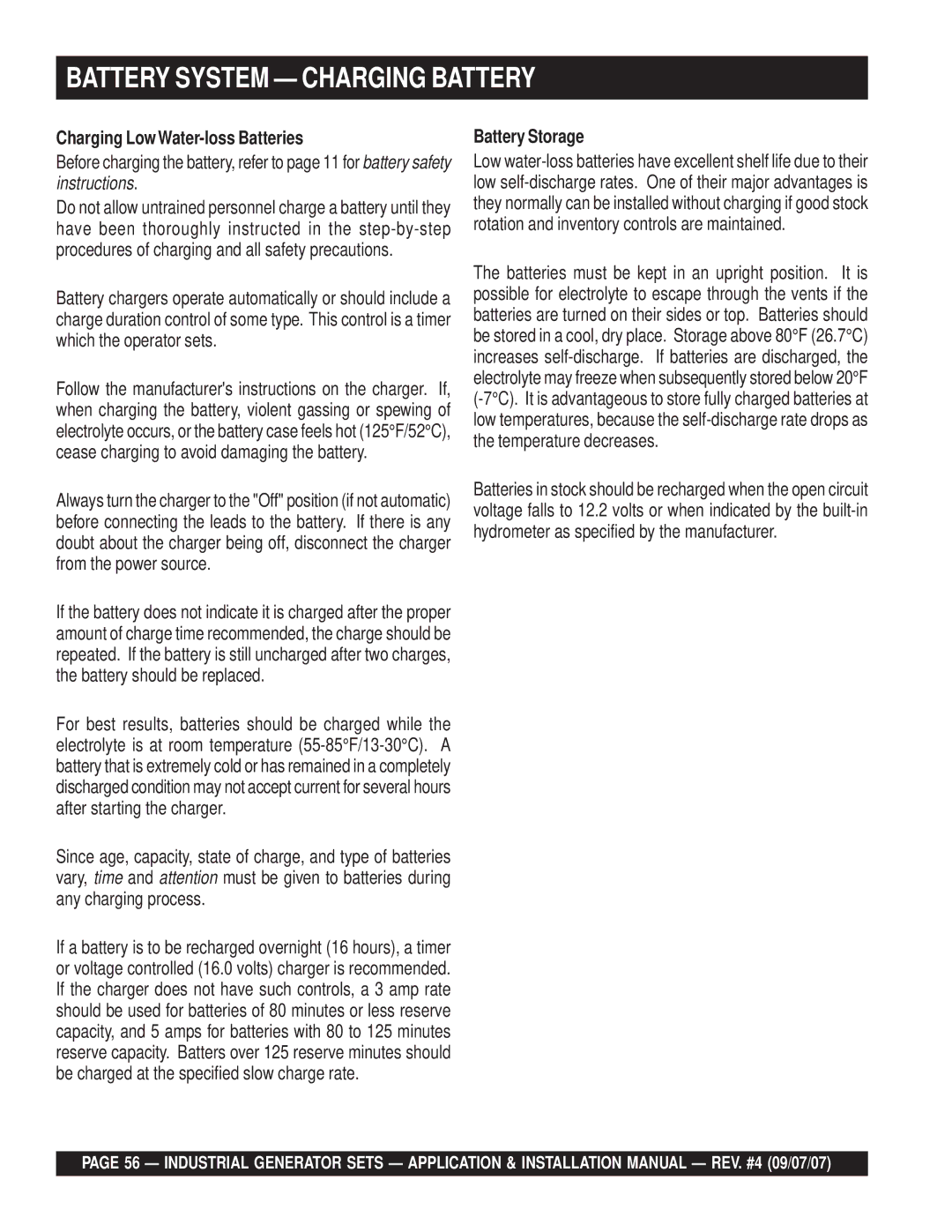
BATTERY SYSTEM — CHARGING BATTERY
Charging LowWater-loss Batteries
Before charging the battery, refer to page 11 for battery safety instructions.
Do not allow untrained personnel charge a battery until they have been thoroughly instructed in the
Battery chargers operate automatically or should include a charge duration control of some type. This control is a timer which the operator sets.
Follow the manufacturer's instructions on the charger. If, when charging the battery, violent gassing or spewing of electrolyte occurs, or the battery case feels hot (125°F/52°C), cease charging to avoid damaging the battery.
Always turn the charger to the "Off" position (if not automatic) before connecting the leads to the battery. If there is any doubt about the charger being off, disconnect the charger from the power source.
If the battery does not indicate it is charged after the proper amount of charge time recommended, the charge should be repeated. If the battery is still uncharged after two charges, the battery should be replaced.
For best results, batteries should be charged while the electrolyte is at room temperature
Since age, capacity, state of charge, and type of batteries vary, time and attention must be given to batteries during any charging process.
If a battery is to be recharged overnight (16 hours), a timer or voltage controlled (16.0 volts) charger is recommended. If the charger does not have such controls, a 3 amp rate should be used for batteries of 80 minutes or less reserve capacity, and 5 amps for batteries with 80 to 125 minutes reserve capacity. Batters over 125 reserve minutes should be charged at the specified slow charge rate.
Battery Storage
Low
The batteries must be kept in an upright position. It is possible for electrolyte to escape through the vents if the batteries are turned on their sides or top. Batteries should be stored in a cool, dry place. Storage above 80°F (26.7°C) increases
Batteries in stock should be recharged when the open circuit voltage falls to 12.2 volts or when indicated by the
PAGE 56 — INDUSTRIAL GENERATOR SETS — APPLICATION & INSTALLATION MANUAL — REV. #4 (09/07/07)
